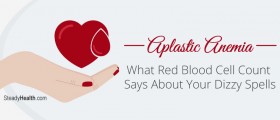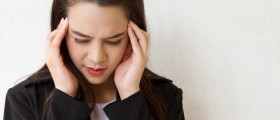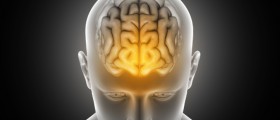It can be said that the human body is very fragile and susceptible to many disorders or diseases that are caused by environmental factors. Some of these conditions are very common and are not harmful to the overall health of the person, such as dizziness or headaches. However, these two conditions sometimes can be very serious when they are indicators of some serious health condition.
Dizzy Spells and Headaches Overview
Almost everyone has experienced dizziness or headaches during their lives. Dizzy spells refer to a condition when a person feels like he/she is going to lose consciousness. Many people experience this condition as vertigo when the objects in the surrounding are seen as if they are moving in a circular way.

Dizzy spells are usually accompanied by headaches, which occur in the forehead in most people. When these two conditions appear at the same time, it usually indicates that there is a certain medical condition developed in the body, which is why it is important to consult a doctor in such cases.
- Studies of the general population and those performed in clinics specializing in dizziness both report a higher than chance association of migraine and vertigo. In a series of 200 patients seen consecutively in a dizziness clinic, 38% met International Headache Society (IHS) criteria for migraine with a lifetime prevalence of 7% of definite migrainous vertigo. In a group of 200 patients with migraine, 9% met criteria for definite migrainous vertigo compared with 0.5% of 200 control orthopedic patients.
- A German Telephone Health Survey screened 4869 participants for a history of vestibular vertigo defined as (1) rotational vertigo, (2) positional vertigo, or (3) recurrent dizziness with nausea and either oscillopsia or episodic imbalance.
- One-thousand three of these participants reported moderate to severe dizziness or vertigo and were able to complete both a screening interview and a detailed neurotologic interview. Of the 1003 participants, 24% reported a lifetime history of vestibular vertigo. The overall lifetime prevalence of vestibular vertigo was reported at 7.4%, a 1-year prevalence at 4.9%, and a 1-year incidence at 1.4%. A subsequent study with this dataset showed a 3.2% prevalence of both migraine and vestibular vertigo in the same participant and a 0.9% prevalence of migrainous vertigo specifically.
- In general, the age of onset of migraine headaches precedes the onset of vertigo attacks by many years, which often obscures the association. However, in individual patients, the age of onset of headaches and vertigo can occur simultaneously or vertigo attacks can precede the onset of headaches. The age of onset of migraine headaches is reported to be in the teens to early 20s, whereas the onset of vertigo averages in the 30s to 40s. Onset after age 50 appears to be less common.
- The difficulty in making the diagnosis often rests on the inconsistent temporal association between the headache and vestibular symptoms. The percentage of patients who report a consistent relationship between headache and vertigo is reported to be as low as 5%, but most reports indicate that ~30 to 70% of patients report at least some episodes of concurrent headache and vertigo.
- Unilateral vestibular pareses in patients with vestibular migraine have been reported with a prevalence of between 8.1 to 23.8%. Two studies have shown that patients with basilar-type migraine specifically have a higher prevalence of a reduced vestibular response (60% in each report), including 12% who were reported as having bilateral reduced vestibular responses.
- In the absence of trials of acute therapy for vertigo attacks, the mainstay of treatment remains the use of vestibular suppressants such as anticholinergics (scopolamine, homatropine), antihistamines (meclizine, hydroxyzine, promethazine, diphenhydramine, dimenhydrinate), anti-dopaminergics (prochlorperazine, metoclopramide), and benzodiazepines. The mechanism of action of these drugs are not pure, however, and are often complicated by sedation, cognitive slowing, and extrapyramidal side effects.
Causes of Dizzy Spells and Headaches
Dizzy spells may be caused due to several reasons. In most cases, an injury to the head almost always leads to the occurrence of dizziness and vertigo. The people who sleep less, people who do not sleep well but work hard, and people who are under constant stress are prone to experience dizziness accompanied by headaches.
Furthermore, people who suffer from hypotension or low blood pressure usually experience dizziness when the blood pressure suddenly drops below 120/80 mm Hg. Sometimes, they even lose consciousness.
One of the causes of dizziness and headaches is dehydration. Therefore, many people feel dizzy when they are exposed to the sun or heat for a long period of time since it is the prime cause for the occurrence of dehydration. In order to avoid it, we have to stay well-hydrated every time we know that we will have to spend some time outdoors when the sun is strong.
As we already know almost every medicine has its adverse effects. One of the side effects of many medications is dizziness followed by headache. Therefore, it is extremely important to follow the instructions labeled on every drug and to take them exactly as it is written in the instructions.
Dizzy spells and headaches also occur when the heart or the brain does not receive enough amounts of fresh oxygenated blood due to some obstruction or blockage in the blood vessels. When this happens, the person feels dizziness and usually becomes unconscious.

















Your thoughts on this
Loading...